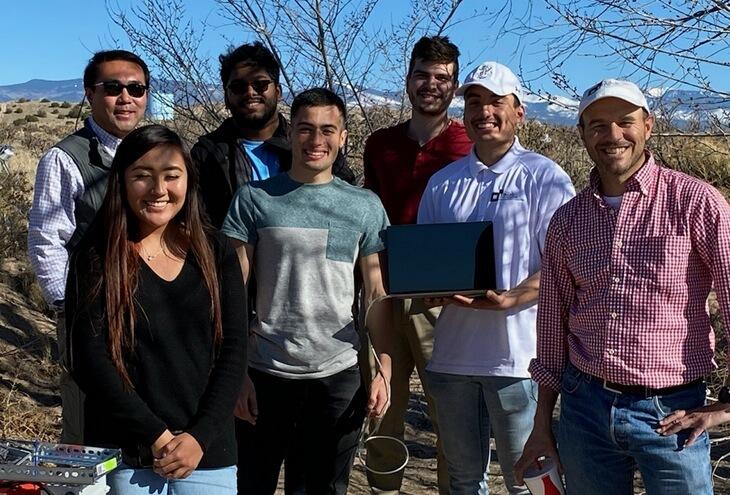Wireless sensor networks build resilience in a Native community — and in our research team
What do you get when you mix over 30 team members representing engineering faculty and students, ROTC cadets, aspiring lawyers, educational psychology instructors, and experts in flooding, then add a dash of ancient tribal knowledge, temperamental field sensors, wireless sensor networks built in-house, and unpredictable weather conditions — all with a one-year deadline and strict budget from a federal funding agency?
One answer could be “a perfect storm.” But my answer would be an amazingly enriching experience that has already exceeded my dream for this project and the potential for learning how research can be led by tribal communities in an area — water — they know more about than the most-cited university professor.
It all began in early 2021 when our University of New Mexico team began a pilot study, thanks to funding from the NSF Civic Innovation Challenge. Luckily, our funders liked what they saw and funded us fully. A year and a half later, our diverse team is well on its way to implementing high-tech solutions to climate challenges like wildfires and flooding in collaboration with the community of Ohkay Owingeh Pueblo in New Mexico.
We began with a pilot project titled “Low-Cost Efficient Wireless Intelligent Sensors (LEWIS) for Greater Preparedness and Resilience to Post-Wildfire Flooding in Native American Communities” with one sensor prototype co-developed and co-designed with our partners at Ohkay Owingeh. The idea to use sensors to help manage the effects of natural disasters — predicting flooding patterns, which are affected by wildfires — was based on our work researching sensors for a variety of applications. For many years, we have taught sensor technology to high school students through workshops in basic programming with microcontrollers. Using this idea, we thought that teaching tribal communities these skills would enable them to co-design wireless sensor network fabrication, type selection, and deployments that would best meet their needs. This approach offers a community-centered way to predict natural disasters, which could mean the difference between life and death.
Students from 10 academic units are part of the project. Undergraduates teach PhD students how to build sensors. Educational psychology researchers observe how engineers discover learning. We all learn from those who are different, and we enjoy not being the expert. Although we came to the project prepared to teach, what has been most enriching is absorbing the cultural education offered by the tribal community, which made us more well-rounded, creative engineers. We found particularly valuable the weekly trips deploying sensors with young Ohkay Owingeh members, who have become the field experts and leaders of this project. We are proud that the community dictates the changes they want, and we meet with them regularly to adapt to their inputs.
So far, our team has done some incredible work, and a lot of that is thanks to Ohkay Owingeh residents and UNM students Lauren Vigil and Alicianna Martinez. Without their knowledge and dedication, this project could have easily failed. Although they are not engineers, their contributions have been invaluable. They've talked to residents and gained their trust, explaining (even translating signs in Tewa) that these strange sensors appearing around the pueblo are not ominous contraptions of Big Brother but are there to educate, empower, and save lives. Without this key bit of translation and communication, we would not have been able to collect data and share knowledge with the people of Ohkay Owingeh.
We are still in the midst of this project, but our ultimate hope is to change life for the better for the residents of Ohkay Owingeh. It was risky involving more than two dozen individuals of varying experience and backgrounds, but that risk has turned into a reward. We’ve learned that if you trust, respect, listen, and adapt to those who were here before us, you will gain more than you bring in. This knowledge will help us in all future projects — in research and in life.
About the Author
Dr. Fernando Moreu is an assistant professor in the Department of Civil, Construction, and Environmental Engineering at The University of New Mexico.













